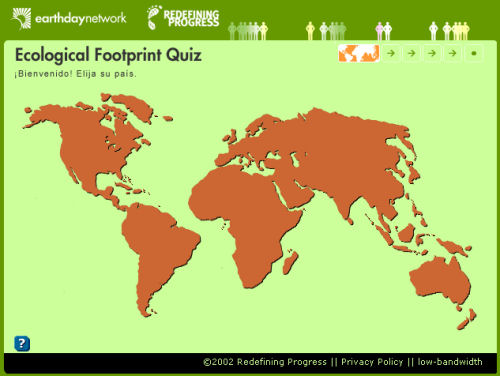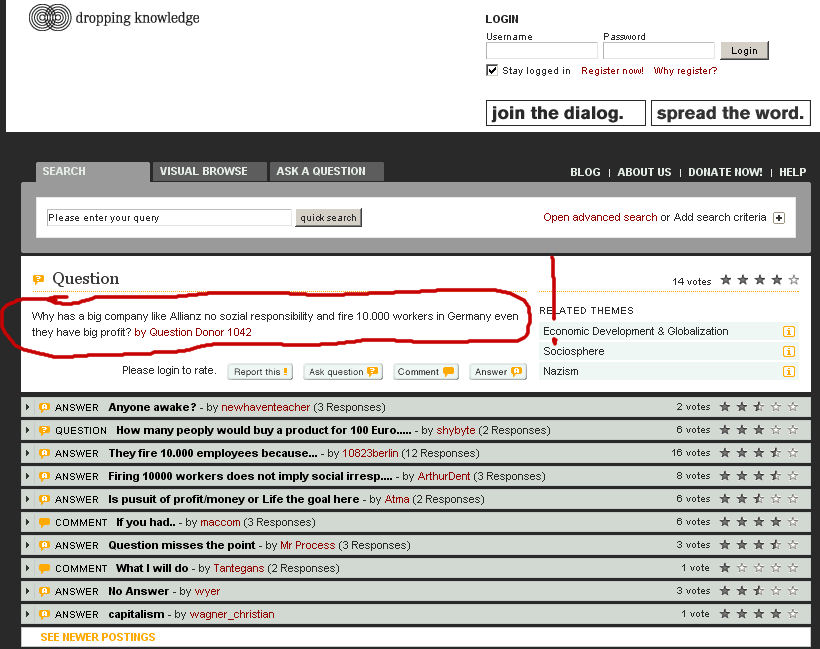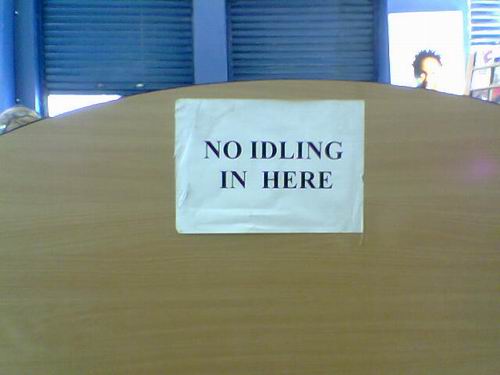Ok, let’s do some viral marketing for GPRS in Kenya…
The other day, I already blogged on GPRS (General Packet Radio Service) in Kenya and complained about Safaricom’s strange GPRS settings which were previously sent to my mobile phone. Of course I am way too complicated from time to time, hence the service never worked – for me – as I had put way too many settings. The whole installation process is quite simple though, hence this little “how to…” round-up on GPRS with Safaricom in Kenya as I also see lots of traffic on my blog on the Safaricom + GPRS issue.
First, let’s look at the current situation and conditions that made me look for an alternative way of accessing the internet: I am currently working at a GoK institution and helping these guys on some technical issues among scientific work (~ working on my final thesis in the water sector). Today we tried to upload an annual report to the HQ in Nairobi which was about 4 MB in size. Knowing that their Winnet webmail service (local ISP) only allows attachments of max. 2 MB, we spilt the file into two pieces and zipped both.
Now, going online from the rural side isn’t that easy – the traditional modem speed depends on the quality of the line (=> attenuation) and with our modern V.90 modem we only got speeds of 16,2 kBit/s – which is nothing of course. A frustrating speed and connection, as you’re charged about 7 Ksh. / minute – and being online doesn’t mean that you’re actually downloading or uploading anything. It just says you’re connected.
In Nairobi, there are many interesting and working alternatives. The cheapest and best alternative of course is the wireless lan at Nairobi’s Java Houses (+ really good food!) and, if you are lucky enough, an AccessKenya.com line via WLAN in your office. Then there are these upcoming CDMA (~UMTS) local networks which currently only work in Nbo and Telekom’s DSL line, although the latter ones raised their prices in August this year and also DSL isn’t as speedy as it used to be. Someone at the Telekom office in Westlands told me that their prices might change again in near future, but until then….you’ll still need a fixed telephone line, and I understand that those are still hard to come by in Kenya due to differenct technical, historical and vandalism reasons.
Which leaves us with the GSM mobile phones that many in Kenya have these days. The best part about these phones – I think – is the prepaid system: a perfect way for the service providers to receive money in advance and no one needs to worry about unpaid receipts. It will only be a matter of time until other sectors jump on the same wagon (Kenya power, water sector, etc).
Now, in order to go online with your phone, all you need is a wap browser which enables you to surf special (wap-enabled) websites. WAP is a rather old service which never really succeeded except for Japan (i-mode) where lots of services are based on this technology (but they are using a different frequency range and technology anyways so let’s ignore them).
In order to actually SURF the internet like my blog or google, yahoo, the BBC news, etc – you’ll need a GSM mobile phone with a (X)HTML enabled browser. Many modern telephones already have this. You can actually access your email by using the browser (“internet”) in your phone. A very convenient way of going online from whereever you are in Kenya with network coverage. GPRS isn’t really needed for this service, but it helps limiting the costs (as you are charged by MB downloaded) + increasing the speed (?).
And then of course there is GPRS for use with computers. This is the sexy part of it. As far as I am informed, there are three different ways of connecting phones to a computer:
a) via InfraRed
b) via Data Cables
c) via Bluetooth
If you are an owner/user of a notebook/laptop computer and also have Bluetooth and a phone that has this Bluetooth functionality, use this! It’s the most convenient way of putting it – also because there can be a distance of up to 10m (sometimes also more) between the computer and the phone. So if the network coverage is bad, just put your phone next to the window (where the receiption is better) and access it via Bluetooth from your computer.
InfraRed is very slow although it works (direct line of sight needed to hook it up with the computer) and then of course there are data cables.
You see, there are some GPRS enabled phones – but without any means to connect a data cable (unless you remove the battery, like on the older Nokia 6510, 8210 series, etc.). And data cables are sometimes hard to come by. Not every shop in Nbo (and of course not even Wachira Electronics here in Embu) sell those cables, even not those posh Nokia Shops @ Sarit Centre & Village Market. Or? Update: the data cable @ Nokia Sarit Centre costs Ksh 5500/=! A fake chinese copy goes for around 1200 /=….
Anyways. if you’re about to buy a new phone, make sure it comes with a data cable. Such a cable is also needed for downloading data content from the phone (pictuers, videos, etc.). I remember that e.g. Sony Ericsson phones already come with such a cable. I personally have all three connection types – the cable (from Ebay Germany @ EUR 4,-), an infrared port on my notebook and Bluetooth on both sides. Bluetooth USB dongles sell for about 10,- EUR in Europe – sijui about their prices here Update: Ksh. 1600/= in downtown, presumably less @ Mitsumi in Parklands. But then, the very popular Nokia 6020 phone here in Kenya does not have Bluetooth, so a cable is the best choice (called “CA-42” (serial) or “DKU-5” (serial-to-USB) for this particular Nokia 6020 – the one for 6230(i) is called “DKU-2” (100% pure USB)).
Another alternative are these data cards (pc cards/pcmcia) that offer GPRS/EDGE technology and are used on laptop computers.
Ok, enough about the technical background, let’s start with the actual service:
In order to use GPRS with Safaricom, all you have to do (as a prepaid customer!!!) is to send an empty short message (SMS) to 4777. That’s it!
They will then shortly afterwards send you a confirmation sms and the settings for your GPRS capable (!) phone which you will be asked to save and activate using the following PIN: “1234“. Simple as that.
If the settings can’t be received for whatever reason, but your phone is able to do GPRS, then try the following settings for Safaricom:
APN: safaricom
username: saf
password: data
(hope i didn’t forget anything here..) UPDATE: kindly check the comments for more details, thx!
PLEASE NOTE:
- GPRS does not always work but it is more reliable and much faster than the traditional modem dial-up. And forget about Safaricom’s 951 dial-up as well as Celtel’s 350 dial-up. Those dial-up services are limited to 9,6 kbit/s, which is even worse than the modem thing via fixed lines. GPRS is instant access and once you click the button on your computer (e.g. Nokia PC Suite “connect to the internet”), you are online within 3 seconds and the connection is stable enough. Stable also means that sometimes it might be fast, and then the next moment it may become very slow. This is NORMAL with GPRS as bundled time slots are not always available.
- Costs, and that’s the best part about it, are ~ 10 Ksh (???) per MB ==> you are billed by the amount of data you have been loading (up & down!), and not the amount of time you have been online. THIS is why I am so fascinated by it. You only pay for the things you really wanted (except of course for junk mail in your mailbox, but that’s another story). A fair deal, I think.
- Connection speed is about 53,6 kBit/s MAXIUM depending on the network (quality) and the amount of users sharing the network at the same time.
- Safaricom’s mobile office website isn’t really THAT comprehensive as it doesn’t reveal many details on the service itself except for the usual marketing blabla. Someone @ the Daily Nation recently compiled an article on GPRS and all he/she did was copying the phrases from Safaricom’s online FAQ. These gals & guys @ SC really need to polish their website a bit.
- The more users are online and sharing one base station, the slower is the connection. Hence, telling others about this great service has the downside that it might eventually lower the speed. But in the meantime, let’s enjoy this service as a hassle-free, easy and convenient way to access the internet. And remember, I am typing these lines from my room here in Embu. GPRS + Inernet on your laptop might of course also work from within a National Park if there’s enought network coverage. Now that’s cool, ama?
- Skype works! And chatting via your prefered IM like YahooIM, MSN, ICQ, etc. doesn’t consume much bandwidth = low costs. Chat for 3hrs and only pay 30 – 50 bob. Now compare that with an internet/cyber café!
@Safaricom: how about some air time for this free-promo? My number is +254723436609 – Asante sana! :-)
p.s.: remember, I’ll work for bandwidth :-)
Ati? Safaricom? What’s this and this? Cooooooooooooooooooooooool. Really. M-Pesa? Like Hawala? Now THAT’s even more important than stable inet access. M-Banking is the next big thing.
@Mzeecedric: pole, I know it’s a long text although access is so simple. I just wanted to write down a few things that had been up in my mind. I so often meet ppl who spend a lot of money on fancy phones (~ going crazy for that video function for whatever dumb reason although they can’t even download the content from their phones) and then all they actually need is to access some things online and/or do online banking.









